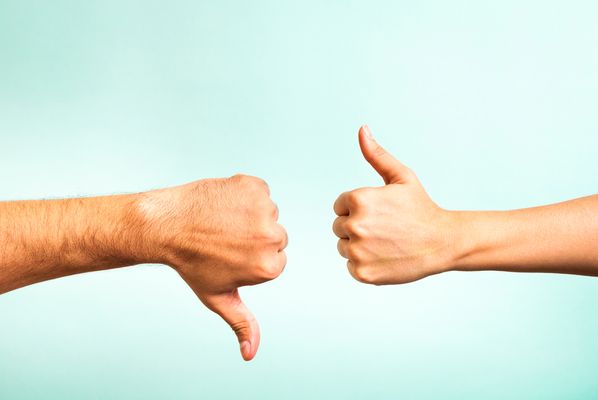9.1.5
News Selection
TV News
TV News
TV news is often regarded as the most reliable.


Why?
Why?
- Newsreaders are seen as ‘neutral’ observers.
- They dress smartly.
- They maintain eye contact throughout the broadcast, viewers feel like they can trust them.


Why?
Why?
- Body language suggests authority.
- They sit up straight, behind a desk, often wearing powerful clothing.


High-tech
High-tech
- High-tech delivery demonstrates the extent gone to to gain the ‘truth’. - E.g. statistical summaries and graphs, green screens, world correspondents etc.
News Values
News Values
News values are the values and assumptions held by editors and journalists which guide them in choosing what is ‘newsworthy’.


News values
News values
- For each new story that is published or broadcast newsmakers ask themselves a series of questions and aim to create the most newsworthy story.
- The more news values the story holds, the more newsworthy it is seen to be and ultimately the more people that will engage with the story.


Composition
Composition
- Composition:
- Do the events fit the style and politics of the newspaper?
- Will there be a balance of items?


Extraordinariness
Extraordinariness
- Extraordinariness :
- Unexpected or rare events have more newsworthiness than routine events because they are out of the ordinary.


Threshold
Threshold
- Threshold:
- The bigger the event the more likely it will be nationally reported.
- E.g. natural disasters.


Reference
Reference
- Reference to elite persons:
- Those stories which show coverage of the famous and the powerful are often seen as more newsworthy than those which feature the general public.


Negativity
Negativity
- Negativity:
- Bad news seems to be more exciting to viewers/readers than good news.


Personalisation
Personalisation
- Personalisation:
- Events may be personalised by associating a particular celebrity or leader with the specific event.
Sociological Approaches to News Selection
Sociological Approaches to News Selection
Neo pluralist, marxist and neo marxist approaches to news selection in the media.


Neo pluralism
Neo pluralism
- Neo-pluralists argue that journalists are objective and impartial pursuers of the truth.
- However they acknowledge this has become increasingly difficult to achieve in a modern world.


Davies
Davies
- Davies suggests that journalists fail in their basic function to check facts due to 24 hour news.
- This creates 'churnalism', where journalists are uncritical and have an over reliance on ‘facts’ produced by government spin doctors.


Marxism
Marxism
- Marxists argue that owners influence the content of the news.
- They do this by giving direct instructions to journalists and broadcasters regarding the stories that should and should not be covered.
- They will often use their newspaper or news program to promote their political agenda, this is now happening more and more due to the concentration of ownership.


Neo Marxism
Neo Marxism
- Neo-marxists suggest biased news is linked to the social background of media professionals.
- The specifically focus on journalists.


The GUMG
The GUMG
- The GUMG (Glasgow University Media Group) argue that the way the news is gathered and presented is the result of a journalists' social background.
- These journalists are often socialised in middle class families and education systems and they see nothing wrong with society so do not criticise it within their reporting.
1Theory & Methods
1.1Sociological Theories
1.2Sociological Methods
2Education with Methods in Context
2.1Role & Function of the Education System
2.2Educational Achievement
2.3Relationships & Processes Within Schools
3Option 1: Culture & Identity
3.1Conceptions of Culture
3.2Identity & Socialisation
3.3Social Identity
3.4Production, Consumption & Globalisation
4Option 1: Families & Households
4.1Families & Households
4.2Changing Patterns
4.3The Symmetrical Family
4.4Children & Childhood
5Option 1: Health
5.1Social Constructions
5.2Social Distribution of Healthcare
5.3Provision & Access to Healthcare
5.4Mental Health
6Option 1: Work, Poverty & Welfare
6.1Poverty & Wealth
7Option 2: Beliefs in Society
7.1Ideology, Science & Religion
7.2Religious Movements
7.3Society & Religion
8Option 2: Global Development
8.1Development, Underdevelopment & Global Inequality
8.2Globalisation & Global Organisations
8.3Aid, Trade, Industrialisation, Urbanisation
9Option 2: The Media
9.1Contemporary Media
9.2Media Representations
10Crime & Deviance
10.1Crime & Society
10.2Social Distribution of Crime
Jump to other topics
1Theory & Methods
1.1Sociological Theories
1.2Sociological Methods
2Education with Methods in Context
2.1Role & Function of the Education System
2.2Educational Achievement
2.3Relationships & Processes Within Schools
3Option 1: Culture & Identity
3.1Conceptions of Culture
3.2Identity & Socialisation
3.3Social Identity
3.4Production, Consumption & Globalisation
4Option 1: Families & Households
4.1Families & Households
4.2Changing Patterns
4.3The Symmetrical Family
4.4Children & Childhood
5Option 1: Health
5.1Social Constructions
5.2Social Distribution of Healthcare
5.3Provision & Access to Healthcare
5.4Mental Health
6Option 1: Work, Poverty & Welfare
6.1Poverty & Wealth
7Option 2: Beliefs in Society
7.1Ideology, Science & Religion
7.2Religious Movements
7.3Society & Religion
8Option 2: Global Development
8.1Development, Underdevelopment & Global Inequality
8.2Globalisation & Global Organisations
8.3Aid, Trade, Industrialisation, Urbanisation
9Option 2: The Media
9.1Contemporary Media
9.2Media Representations
10Crime & Deviance
10.1Crime & Society
10.2Social Distribution of Crime
Unlock your full potential with Seneca Premium
Unlimited access to 10,000+ open-ended exam questions
Mini-mock exams based on your study history
Unlock 800+ premium courses & e-books
